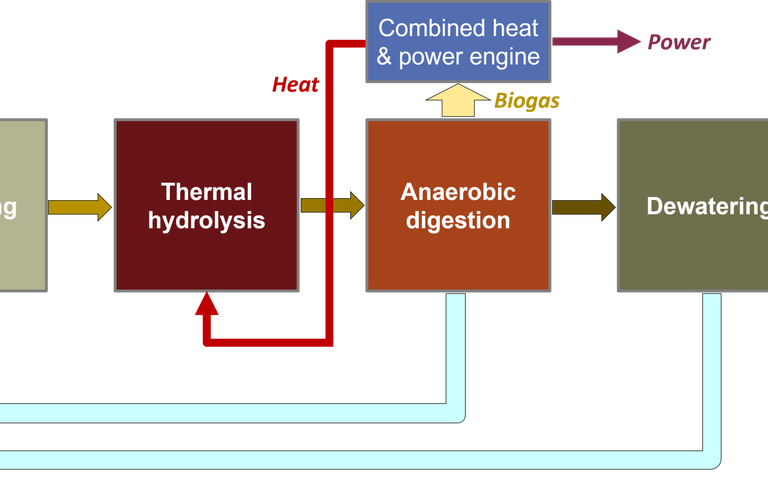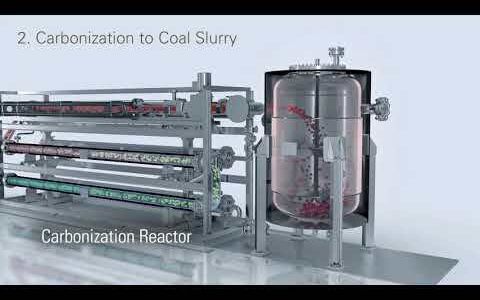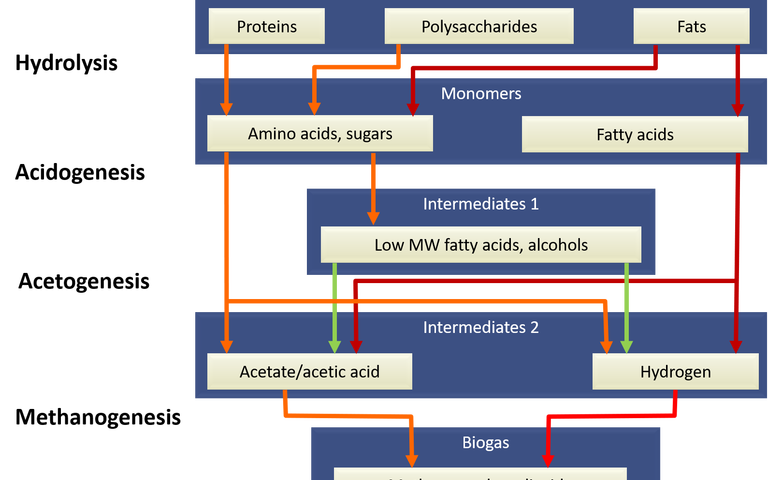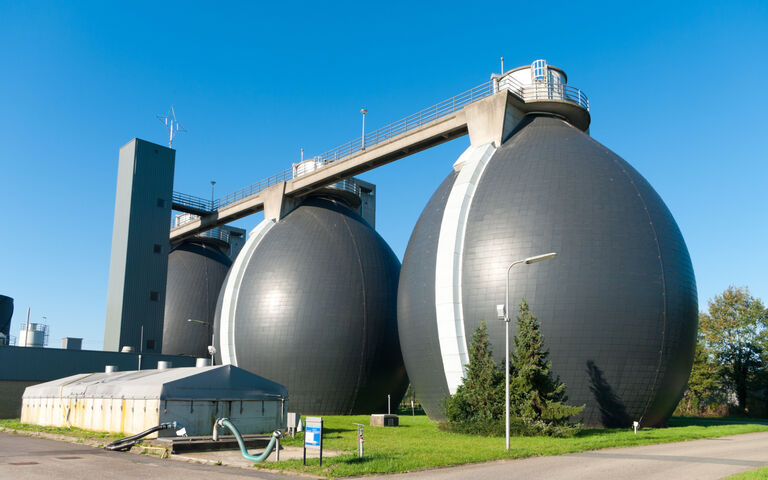Life Cycle Assessment of sludge − ten research papers
Life Cycle Assessment (LCA)
Our list is presented in reverse chronological order without preference. It was compiled by Simon Judd in September 2022 and may be updated in future as new papers are published.
LCA background
LCA (life cycle assessment/analysis) takes account of the total potential environmental impacts of products, services or installations over the entire life cycle. This means that the common currency in an LCA isn’t US dollars or Euros, but CO2. But an LCA must also account for the environmental impact of discharged pollutants and the use of non-renewable resources. This means that in water industry-based LCAs there’s very often a balance between capturing a resource from a waste product for reuse and the energy demand and/or non-renewable resource use in achieving this goal, as well as the impact of discharged pollutants.
Extracting resources or value from sludge is a vibrant area of research. There’s at least one journal (Waste and Biomass Valorization) dedicated to the subject, and the topic features quite regularly in more general journals such as the Journal of Cleaner Production, Waste Management and Bioresource Technology.
10 research paper abstracts, LCA in sludge processing
Given that LCA as a tool can be applied to pretty much anything, and provides arguably the most consistent basis for comparison of the efficacy of different options, it is unsurprising that it has been widely applied to sludge management. The selection of recent research publications given below, in reverse chronological order with links to the original papers, are all taken from the past two years. They encompass a number of different aspects of sludge processing and disposal.
1. A comparison of composting with:
- anaerobic digestion,
- anaerobic digestion and pyrolysis, and
- anaerobic digestion and incineration,
with reference to the overall energy balance and environmental impact, taking account of the capture of heat and, in one instance, the reuse of the product solids as a building material.
2. A comparison of the impact of conventional thermal pre-treatment with:
- microwave and ultrasonication pre-treatment techniques, and
- alkaline conditioning, combined alkali-thermal treatment, freeze-thawing low temperature thermal treatment, and ultrasonication,
on the efficacy of the downstream anaerobic digestion process.
3. A comparison of pyrolysis and incineration, taking into account the end use of the biochar product of pyrolysis.
4. A comparison of four incineration/co-incineration options using methodologies based on LCA, cumulative energy demand and life cycle cost.
5. A consideration of the key resource reclamation example of phosphorus recovery as struvite, based on a full-scale wastewater treatment works in Belgium.
6. An assessment of the impact of the various operational modes of pyrolysis and the related products (slow pyrolysis for biochar production vs. fast pyrolysis for bio-oil).
7. A review article focused on energy and nutrient recovery.
The popularity of the subject is to some extent reflected in the number of sites of the review article: almost 30 in the past 12 months. Research centres involved in the above selection are spread across 14 nations. As noted in previous posts, research in this area is truly international. And given the global importance of this particular subject, long may it remain so.
Abstract
In this study, different management strategies for sewage sludge disposal were evaluated associated with environmental, energy, and economic impact, using life cycle assessment (LCA), cumulative energy demand (CED) and life cycle costing (LCC) approaches. Four scenarios, including mono-incineration, co-incineration in municipal solid wastes (MSW) incineration plant, co-incineration in coal-fired power plant and co-incineration in cement kiln, were assessed. The environmental burdens generated from the sludge incineration contributed primarily to the global warming, followed by eutrophication, marine aquatic ecotoxicity, and human toxicity potential across the four scenarios. Furthermore, mono-incineration scenario appeared to be the most environmentally unfriendly, energy and economy intensive alternative, with the LCA, CED and LCC value of 5.41E-09, 1736 MJ and 1.84 million CNY, respectively. By contrast, co-incineration in cement kiln exhibited the lowest CED (368 MJ), LCC (0.59 million CNY), and environmental burdens (1.02E-09). In addition, the sensitivity analysis indicated that four scenarios were sensitive to the changes in the electricity efficiency and the moisture content contained in sewage sludge, suggesting that it was of great significance to enhance the efficiency of sludge dewatering and thermal drying The findings of this study can provide scientific reference for selecting the optimal strategies for the most environmentally and economically friendly sewage sludge management with optimum energy efficiency.
© 2022 Elsevier LtdFull Reference
Xiao, Hu., Li, K., Zhang, D., Tang, Z., Niu, X., Yi, L., Lin, Z., Fu, M. (2022). Environmental, energy, and economic impact assessment of sludge management alternatives based on incineration. Journal of Environmental Management, 321 115848
Abstract
Energy sustainability is one of the critical parameters to be studied for the successful application of pretreatment processes. This study critically analyzes the energy efficiency of different energy-demanding sludge pretreatment techniques. Conventional thermal pretreatment of sludge (∼5% total solids, TS) produced 244 mL CH4/gTS, which could result in a positive energy balance of 2.6 kJ/kg TS. However, microwave pretreatment could generate only 178 mL CH4/gTS with a negative energy balance of −15.62 kJ/kg TS. In CAMBI process, the heat requirements can be compensated using exhaust gases and hot water from combined heat and power, and electricity requirements are managed by the use of cogeneration. The study concluded that <100 ℃ pretreatment effectively enhances the efficiency of anaerobic digestion and shows positive energy balance over microwave and ultrasonication. Moreover, microwave pretreatment has the highest global warming potential than thermal and ultrasonic pre-treatments.
© 2022 Elsevier LtdFull Reference
Balasundaram, G., Vidyarthi, P. K., Gahlot, P., Arora, P., Kumar, V., Kumar, M., Kazmi, A.A., Tyagi, V. K. (2022). Energy feasibility and life cycle assessment of sludge pretreatment methods for advanced anaerobic digestion. Bioresource Technology, 357 127345
Abstract
Phosphate rock (PR) has been designated as a Critical Raw Material in the European Union (EU). This has led to increased emphasis on alternative P recovery (APR) from secondary streams like wastewater sludge (WWS). However, WWS end-use is a contentious topic, and EU member states prefer different end-use pathways (land application/incineration/valorisation in cement kilns). Previous Life Cycle Assessments (LCA) on APRs from WWS reached contrasting conclusions; while most considered WWS as waste and highlighted a net benefit relative to PR mining and beneficiation, others viewed WWS as a resource and highlighted a net burden of the treatment. We used a combined functional unit (that views WWS from a waste as well as a resource perspective) and applied it on a Flemish wastewater treatment plant (WWTP) with struvite recovery as APR technology. Firstly, a retrospective comparison was performed to measure the WWTP performance before and after struvite recovery and the analysis was complemented by uncertainty and global sensitivity analyses. The results showed struvite recovery provides marginal environmental benefits due to improved WWS dewatering and reduced polymer use. Secondly, a prospective LCA approach was performed to reflect policy changes regarding WWS end-use options in Flanders. Results indicated complete mono-incineration of WWS, ash processing to recover P and the subsequent land application appears to be less sustainable in terms of climate change, human toxicity, and terrestrial acidification relative to the status quo, i.e., co-incineration with municipal solid waste and valorisation at cement kilns. Impacts on fossil depletion, however, favour mono-incineration over the status quo.
Full Reference
Ravi, R., Beyers, M., Bruun, S., & Meers, E. (2022). Life cycle assessment of struvite recovery and wastewater sludge end-use: A Flemish illustration. Resources, Conservation and Recycling, 182 106325
Abstract
This study aimed to determine the feasibility of pyrolysis scenarios as sewage sludge treatment processes through cradle-to-gate life-cycle assessment and additional energy consumption, carbon emission, and economic benefit analyses, considering circular economy principles. The examined pyrolysis scenarios include slow pyrolysis with various residence times to produce activated carbon (AC) or biochar and fast pyrolysis to produce bio-oil, all with internal gas energy recovery. The functional unit (FU) in this study comprises 1000 kg of dried sludge entering the pyrolysis reactor. The overall evaluation and new product application routes address gaps in current studies on sludge treatment via pyrolysis. Environmentally, the bio-oil (-0.31 kg CO2-eq/kg FU) and biochar (-0.05 kg CO2-eq/kg FU) scenarios show considerable improvement over contemporary pyrolysis and other conventional sludge treatment methods. The AC scenarios have higher toxicity but lower carbon emissions (1.50–1.70 kg CO2-eq/kg FU) than contemporary AC production processes. Chemical reagent usage has significant effects on the environmental burden of AC production processes. The biochar and bio-oil pyrolysis scenarios achieve net energy recovery through product applications. Although the AC scenarios still require energy input, this demand can be significantly reduced by optimising moisture removal processes. Operating cost analysis indicates that the examined pyrolysis scenarios are potentially profitable. Primary product yield and market value are significant factors determining the net profit of these pyrolysis scenarios, but further assessment of capital costs is required. This study shows that bio-oil and biochar pyrolysis are eco-friendly sewage sludge treatment methods.
© 2022 Elsevier LtdFull Reference
Huang, C., Mohamed, B. A., & Li, L. Y. (2022). Comparative life-cycle assessment of pyrolysis processes for producing bio-oil, biochar, and activated carbon from sewage sludge. Resources, Conservation and Recycling, 181 106273
Abstract
The establishment of the Urban Wastewater Treatment Directive resulted in an immense increasing quantity of sewage sludge produced from wastewater treatment plants. With most up to date the “Ex-post evaluation of certain waste stream directives”, various legislation and strategies were derived from fulfilling the requirements resulting from this directive appropriately, in an economical and environmentally acceptable way. This paper intends to assess and compare the environmental impact of exploiting the sewage sludge in open windrow facilities for compost production versus using an anaerobic digester for the production of biogas. The two alternative post-processing pathways' environmental assessment is conducted with the use of the Life Cycle Assessment methodology. The investigation presented that the energy savings for managing sewage sludge for biogas production than producing compost are estimated at 27060 MJ per 1 t of input (SS), and the avoided carbon dioxide emissions are 697 kg/t of digested sludge. The scientific value of this study is that it provides a justified answer to the compost versus biogas dilemma, based on a quantified assessment of both methods' environmental aspects. Life Cycle Assessment's employment brings forth in-depth information regarding the energy embodied in compost and biogas production. The selection among the most ecological method relevant to sewage sludge exploitation is provided by thoroughly sophisticated decision-making. The life cycle stages of the analyzed mechanisms that have the most damaging consequences on the ecosystem include the composting and anaerobic digestion stage, whereas the least energy-consuming stages are the thickening, and drying process, in both scenarios. The Life Cycle Assessment outcomes indicated that the environmental impact of the anaerobic digestion process is lower than the composting process, in the range between 6.5% and 7.5%, across all environment effect levels. The exploitation of waste materials to produce useful products such as compost and biogas gives the final product added environmental value.
© 2022 Elsevier LtdFull Reference
Morsink-Georgali, P., Kylili, A., Fokaides, P. A., & Papadopoulos, A. M. (2022). Compost versus biogas treatment of sewage sludge dilemma assessment using life cycle analysis. Journal of Cleaner Production, 350 131490
Abstract
Due to the global trend of urbanization, the amount of sewage water is increasing in cities. This calls for efficient treatment of the resulting sewage sludge. To date, in the 27 European Union member countries (EU-27), the prevailing treatment method is application on arable land. Anaerobic digestion is one of the treatment methods being increasingly used nowadays. However, the resulting digestate requires further utilization. Therefore, in this study, the environmental performance of composting, combustion, and pyrolysis options for dewatered sewage sludge digestate is evaluated based on a life cycle assessment. The results show that digestate combustion and composting performed better than pyrolysis for most of the selected impact categories. However, pyrolysis of sewage sludge is still under development, and there are, to some degree, uncertainties in the data related to this technology; thus, more information for the performance assessment of pyrolysis is still required.
© 2021 The authorsFull Reference
Havukainen, J., Saud, A., Astrup, T. F., Peltola, P., & Horttanainen, M. (2022). Environmental performance of dewatered sewage sludge digestate utilization based on life cycle assessment. Waste Management, 137, 210-221
Abstract
With the acceleration of economic development and urbanization in China, sewage sludge generation has sharply increased. To maximize energy regeneration and resource recovery, it is crucial to analyze the environmental impact and sustainability of different sewage sludge recycling systems based on life cycle assessment. This study analyzed four sewage sludge recycling systems in China through life cycle assessment using the ReCipe method, namely aerobic composting, anaerobic digestion and biomass utilization, incineration, and heat utilization and using for building materials. In particular, the key pollution processes and pollutants in sewage sludge recycling systems were analyzed. The results demonstrated that aerobic composting is the most environmentally optimal scenario for reducing emissions and energy consumption. The lowest environmental impact and operating costs were achieved by making bricks and using them as building materials; this was the optimal scenario for sludge treatment and recycling. In contrast, incineration and heat utilization had the highest impact on health and marine toxicity. Anaerobic digestion and biomass utilization had the highest impact on climate change, terrestrial acidification, photochemical oxidant formation, and particulate matter formation. In the future, policy designers should prioritize building material creation for sludge treatment and recycling.
© 2021 Technoscience PublicationsFull Reference
Zhang, J., & Matsumoto, T. (2021). Comparative life cycle assessment analysis of sewage sludge recycling systems in China. Nature Environment and Pollution Technology, 20(5), 2099-2110
Abstract
In this work, different pretreatment technologies (low temperature thermal treatment, ultrasonication, alkali treatment, combined alkali-thermal treatment, icing-thawing) were investigated together with biochar addition to increase biogas yield from sewage sludge. The aim of the work was to develop a standardized protocol, including physicochemical characterization, biochemical methane potential (BMP) tests, digestate characterization, life cycle assessment (LCA) and economic analysis, to verify the techno-economic suitability and the related environmental impacts of upgrading conventional full-scale anaerobic digesters. Low-temperature (65–85 °C) thermal pretreatment showed the best performances in enhancing sludge solubilization and methane yield (up to 110%), followed by ultrasonication (up to 53%) and biochar addition (about 16%). The solubilization rate obtained after each pretreatment was similar for municipal and industrial sludge; however, it did not correspond to a proportional increase in methane yield. LCA showed that ultrasonication led to the worst environmental impacts at laboratory scale, due to the huge electricity request; however, at full-scale conditions, green-house gases (GHG) emissions could be reduced by 22%, fossil depletion by 25% and stratospheric ozone depletion by 18%, when compared to the baseline scenario (raw sludge anaerobic digestion). The economic analysis proved that the high ultrasonication capital costs could not be recovered in the considered timeframe (15 yr), while biochar price should be significantly lowered (down to 6.5 €/ton) to give an overall positive outcome. Finally, the thermal scenario would be convenient only when considering waste heat recovery. The proposed protocol, including physicochemical sludge characterization, BMP tests, digestate characterization, LCA and economic analysis, could be extended to other existing digesters to compare alternative pretreatment strategies, enhancing renewable energy generation in biogas form.
© 2021 Elsevier LtdFull Reference
Mainardis, M., Buttazzoni, M., Gievers, F., Vance, C., Magnolo, F., Murphy, F., & Goi, D. (2021). Life cycle assessment of sewage sludge pretreatment for biogas production: From laboratory tests to full-scale applicability. Journal of Cleaner Production, 322 129056
Abstract
The pyrolysis of sewage sludge is an alternative method to recycle the contained nutrients, such as phosphorus, by material use of the resulting biochar. However, the ecological effects of pyrolysis are not easy to evaluate. Therefore, a life cycle assessment (LCA) was carried out to determine the environmental impact of sewage sludge pyrolysis and to compare it with the common method of sewage sludge incineration. In order to identify the most sustainable applications of the resulting biochar, four different scenarios were analyzed. The modeled life cycles include dewatering, drying and pyrolysis of digested sewage sludge and utilization paths of the by-products as well as various applications of the produced biochar and associated transports. The life cycle impact assessment was carried out using the ReCiPe midpoint method. The best scenario in terms of global warming potential (GWP) was the use of biochar in horticulture with net emissions of 2 g CO2 eq./kg sewage sludge. This scenario of biochar utilization can achieve savings of 78% of CO2
eq. emissions compared to the benchmark process of sewage sludge mono-incineration. In addition, no ecological hotspots in critical categories such as eutrophication or ecotoxicity were identified for the material use of biochar compared to the benchmark. Pyrolysis of digested sewage sludge with appropriate biochar utilization can therefore be an environmentally friendly option for both sequestering carbon and closing the nutrient cycle.
© 2020 Cisa Publisher.Full Reference
Gievers, F., Loewen, A., & Nelles, M. (2021). Life cycle assessment of sewage sludge pyrolysis: Environmental impacts of biochar as carbon sequestrator and nutrient recycler. Detritus, 16, 94-105 15111.
Abstract
With the acceleration of urbanization, the production of urban sludge is increasing rapidly. To minimize resource input and waste output, it is crucial to execute analyses of environmental impact and assessments of sustainability on different technical strategies involving sludge disposal based on Life Cycle Assessment (LCA), which is a great potential mean of environmental management adopted internationally in the 21st century. This review aims to compare the environmental sustainability of existing sludge management schemes with a purpose of nutrient recovery and energy saving, respectively, and also to include the substitution benefits of alternative sludge products. Simultaneously, LCA research regarding the emerging sludge management technologies and sludge recycling (cement, adsorbent, bricks) is analyzed. Additionally, the key aspects of the LCA process are worth noting in the context of the current limitations reviewed here. It is worth emphasizing that no technical remediation method can reduce all environmental damage simultaneously, and these schemes are typically more applicable to the assumed local conditions. Future LCA research should pay more attention to the toxic effects of different sludge treatment methods, evaluate the technical ways of adding pretreatment technology to the ‘front end’ of the sludge treatment process, and further explore how to markedly reduce environmental damage in order to maximize energy and nutrient recovery from the LCA perspective.
© 2021 Elsevier LtdFull Reference
Ding, A., Zhang, R., Ngo, H. H., He, X., Ma, J., Nan, J., & Li, G. (2021). Life cycle assessment of sewage sludge treatment and disposal based on nutrient and energy recovery: A review. Science of the Total Environment, 769 144451

Professor Simon Judd has over 30 years’ post-doctorate experience in all aspects of water and wastewater treatment technology, both in academic and industrial R&D. He has (co-)authored six book titles and over 200 peer-reviewed publications in water and wastewater treatment.
In his capacity as director of Judd Water & Wastewater Consultants, Simon is co-owner of SludgeProcessing.com, as well as of our sister website The MBR Site. He was Professor in Membrane Technology at the Cranfield Water Science Institute at Cranfield University in the UK from 1992 until 2021. Simon was also a Research Chair at Qatar University in the Middle East for six years until September 2018.





